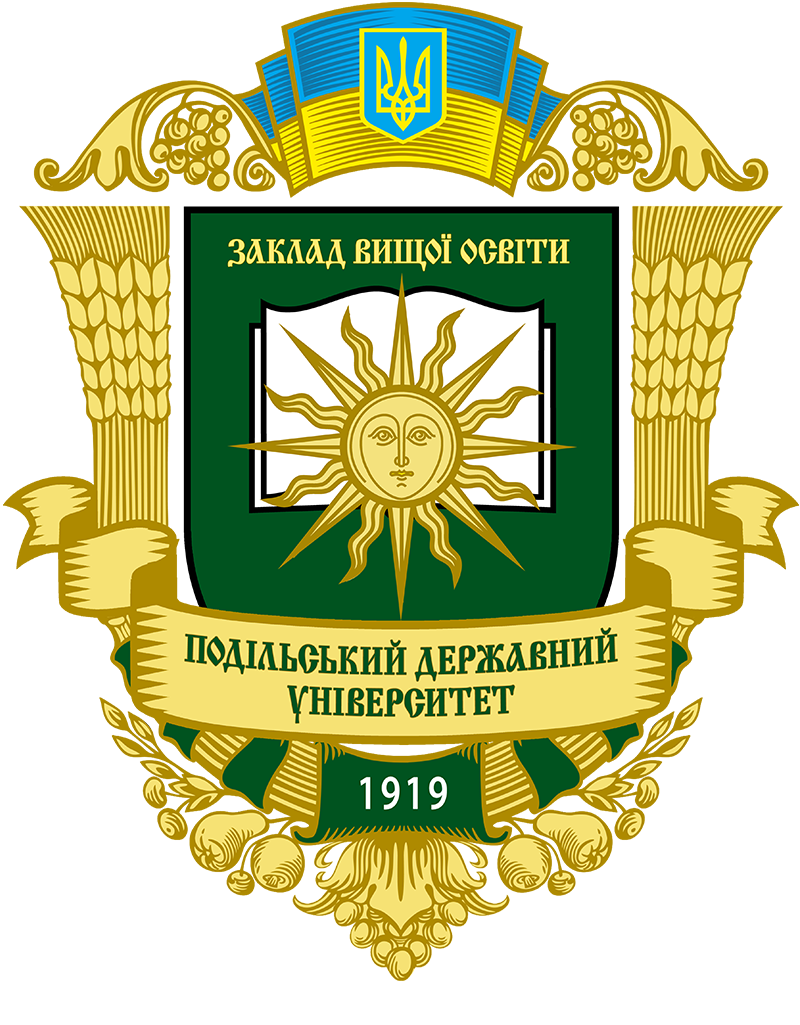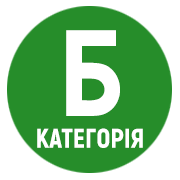SPREAD OF BOVINE NECROBACTERIOSIS IN THE KHMELNYTSKYI REGION
DOI:
https://doi.org/10.37406/2706-9052-2023-3.18Keywords:
necrobacteriosis, Fusobacterium necrophorum, microbiocenosis, bioassayAbstract
Bovine necrobacteriosis is a disease that causes significant economic losses in dairy farming. It has been established that the spread of this disease occurs in large farms where highly productive animals are kept. The paper deals with the distribution of fusobacteria in the farms of Khmelnytsky region and the peculiarities of laboratory diagnostics of the pathogen. For bacteriological examination, biological material was collected in vivo - scrapings from lesions on the border of healthy and necrotic tissue. Identification of cultures was performed on the basis of morphological, tinctorial, cultural and biological properties assessed by conventional bacteriological methods, as well as using the Bergie’s determinant. Necrobacteriosis in the farms was clinically manifested in most dairy cows, with isolated cases in calves. It was found that the highest percentage of sick cows in the entire dairy herd was observed in the second lactation. Necrobacteriosis of the distal limbs was usually complicated by purulent and putrefactive microflora. Fusobacterium necrophorum was always isolated in association with other bacteria: Clostridium difficile, Escherichia coli, Staphylococcus aureus and other opportunistic pathogens. Fusobacterium necrophorum was poorly identified on the basis of morphological and biochemical properties, but the biological test on rabbits gave a consistently positive result. In the presence of F. necrophorum in the pathological material or in the culture, necrosis developed in the rabbit at the puncture site in 3–4 days.
References
Alsaaod, M., Huber, S., Beer, G., Kohler, P., Schüpbach-Regula, G., & Steiner A. (2017). Locomotion characteristics of dairy cows walking on pasture and the effect of artificial flooring systems on locomotion comfort. Journal of Dairy Science, 100(10), 8330-8337. https://doi.org/10.3168/jds.2017-12760.
B Sadiq, M., Ramanoon, S.Z., Shaik Mossadeq, W.M., Mansor, R., & Syed-Hussain, S.S. (2017). Association between lameness and indicators of dairy cow welfare based on locomotion scoring, body and hock condition, leg hygiene and lying behavior. Animals: an open access journal from MDPI, 7(11), 79. https://doi.org/ 10.3390/ani7110079.
Becker, J., Steiner, A., Kohler, S. [et al.] (2014). Lameness and foot lesions in Swiss dairy cows: I. Prevalence. Schweizer Archiv für Tierheilkunde, 71-78. doi: 10. 1024/0036-7281/a000553.
Garrity, G.M., Winters, M., Kuo, A.W., & Searles, D.B. (2001). Taxonomic outline of the procaryotes, release 1.0. Bergey’s manual of systematic bacteriology (Second ed.). New York: Springer-Verlag.
Golovko, N., Ushkalov, V.A., Skrypnyk V.G. et al. (2007). Microbiological and virological methods of research in veterinary medicine: A reference manual. Kharkiv: NTMT, 512 p.
Hassall, S.A., Ward, W.R., & Murray, R.D. (1993). Effects of lameness on the behaviour of cows during the summer. The Veterinary Record, 132, 578–580. doi: 10. 1136/vr.132.23.578.
Nagaraja, T.G., & Lechtenberg, K.F. (2007). Liver Abscesses in Feedlot Cattle. Veterinary Clinics of North America: Food Animal Practice, 23, 351–369. doi:10. 1016/j.cvfa.2007.05.002.
O’Callaghan, K., Cripps, P., Downham, D., & Murray, R. (2003). Subjective and objective assessment of pain and discomfort due to lameness in dairy cattle. Animal Welfare, 12(4), 605–610. doi:10.1017/S0962728600026257.
Rutherford, K. M., Langford, F. M., Jack, M. C., Sherwood, L., Lawrence, A. B., & Haskell, M. J. (2009). Lameness prevalence and risk factors in organic and non-organic dairy herds in the United Kingdom. Veterinary journal (London, England: 1997), 180(1), 95-105. https://doi.org/10.1016/j.tvjl.2008.03.015.
Tadepalli, S., Narayanan, S.K., Stewart, G.C., Chengappa, M. M., & Nagaraja, T.G. (2009). Fusobacterium necrophorum: A ruminal bacterium that invades liver to cause abscesses in cattle. Anaerobe, 15, 36–43. doi: 10.1016/j.anaerobe.2008.05.005.
Tan, Z.L., Nagaraya, T.G., & Chengappa, M.M. (1994). Selective enumeration of Fusobacterium necrophorum from the bovine rumen. Applied and environmental microbiology, 60(4), 1387–1389. doi: 10.1128/aem.60.4.1387-1389.1994.
Andriiashchuk, V., Horbatiuk, O., Garkavenko, T., Ryzhenko, G., Tyutyun, S., Ukhovska, T., Zhovnir, O., & Krylenko, S. (2018). Bakteriologichnyj monitoryng zahvorjuvannja na nekrobakterioz tvaryn ta zasoby specyfichnoi’ profilaktyky [Bacteriological monitoring of necrobacillosis and means of its specific prevention] Veterinary Biotechnology, 32 (2), 27–36 [in Ukrainian].
Vlasenko, V., Rublenko, M., Ilnytskyi, M., & Kozii, V. (2003). Poshyrennja zahvorjuvan’ v diljanci pal’cja u vysokoproduktyvnyh koriv zalezhno vid rivnja molochnoi’ produktyvnosti [Disease spread in the finger area in high-yielding cows depending on the level of milk production] Bulletin of the Bulletin of Bila Tserkva University State Agrarian University, 25(1), 45–51 [in Ukrainian].
Gorbatjuk, O.I., Zhovnir, O.M., & Andrijashhuk, V.O. (2013). Etiopatogenetychni osoblyvosti formuvannja mikrobiocenozu za nekrobakteriozu tvaryn [The ethiopathological peculiarities of microbiocenosis forming at animal necrobacteriosis] Veterinary medicine, 97, 173–175 [in Ukrainian].
Demchuk, M.V., Knyshuk ,P.V., Bojko, P.K., & Tkachuk, V.M. (2010). Osoblyvosti profilaktyky nekrobakteriozu u koriv [Prophylaxis characteristics of necrobacteriosis at live-stock production farm] Scientific Bulletin of LNUVMBT named after S.Z. Grzycki, 2-1(44), 74–81 [in Ukrainian].
Efimenko, M.Y., Podoba, B.E., & Bratuschka, R.V. (2014). Nekontrol’ovana “golshtynizacija” ukrai’ns’koi’ chorno-rjaboi’ molochnoi’ porody: ochikuvannja ta realii’ [Uncontrolled „Holsteinisation” of the Ukrainian Black-and-White dairy breed: expectations and realities] Journal “Proposal”, 9, 186–189 [in Ukrainian].
Zhovnir, O.М., Gorbatiuk, O.I., Andriyashchuk, V.A., Ryzhenko, G.F., Tiutiun, S.M., Rudoi, A.V., & Kamenchuk, P.P. (2015). Monitoryng nekrobakteriozu, osnovnyj vydovyj spektr mikrobnyh asociacij za uchasti F. necrophorum ta specyfichni zasoby profilaktyky [Monitoring of necrobacillosis and species range of the most common microbial associations involving F. necrophorum] Veterinary Biotechnology, 27, 112–121 [in Ukrainian].
Kulyk, M.F., Kravtsiv, R.Y., & Obertyukh, Y.V. (2003). Kormy: ocinka, vykorystannja, produkcija tvarynnyctva, ekologija [Feed: assessment, use, livestock products, ecology] Vinnytsia “Tezis”, 52–74 [in Ukrainian].
Marchenko, O.M., Dementieva, S.A., & Ryzhenko, V.P. (2002). Asociacii’ Fusobacterium necrophorum z inshymy mikroorganizmamy pry nekrobakteriozi u sil’s’kogospodars’kyh tvaryn [Associations of Fusobacterium necrophorum with other microorganisms in necrobacteriosis in farm animals] Bulletin of the Bila Tserkva State Agrarian University, 21, 139–144 [in Ukrainian].
Ryzhenko, V.P., Ryzhenko, G.F., Horbatiuk, O.I., Andriashchuk, V.O., Belik, S.M., & Zhovnir, O.M. (2009). Osnovni prychyny vynyknennja nekrobakteriozu ta zahyst vid n’ogo velykoi’ rogatoi’ hudoby v umovah s’ogodennja [The main causes of necrobacteriosis and protection against it in cattle in modern conditions] Veterinary biotechnology, 14, 257–277 [in Ukrainian].
Ryzhenko, V.P., Ryzhenko, G.F., Gorbatyuk, O.I. [et al]. (2011). Naukovyj suprovid profilaktychnyh ta ozdorovchyh zahodiv pry fuzobakteriozi (nekrobakteriozi) [Scientific support of preventive and health measures for fusobacteriosis (necrobacteriosis)] Veterinary medicine, 95, 261–263. https://doi.org/10.31073/vet_ biotech32(2)-02 [in Ukrainian].
Stavetska, R. Golshtynizacija: koly zupynytysja [Holsteinization: when to stop] The Ukrainian Farmer. URL: http:// www.pressreader.com/ukraine/the-ukrainianfarmer/ 20151209/283003988740772 [in Ukrainian].
Ulko, L.G. (2013). Efektyvnist’ likuval’no-profilaktychnyh zahodiv za asocijovanyh bakterioziv kincivok u velykoi’ rogatoi’ hudoby [The effectiveness of therapeutic and prevention activities of associate bacteriosis limbs in cattle]. Veterinary medicine, 97, 257–259 [in Ukrainian].
Khomyn, N.M., Mysak, A.R., Iglitskyi, I.I., & Pritsak, V.V. (2017). Poshyrenist’ ta prychyny vynyknennja hvorob kopytec’ u koriv [Prevalance and causes of diseases occurrence of cow’s hooves] Scientific Bulletin of LNUVMBT named after Hzhytskyi, 1(77), 22–26. doi:10.15421/nvlvet7706 [in Ukrainian].










